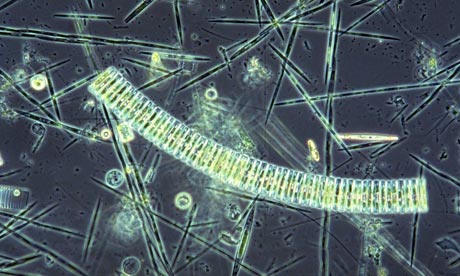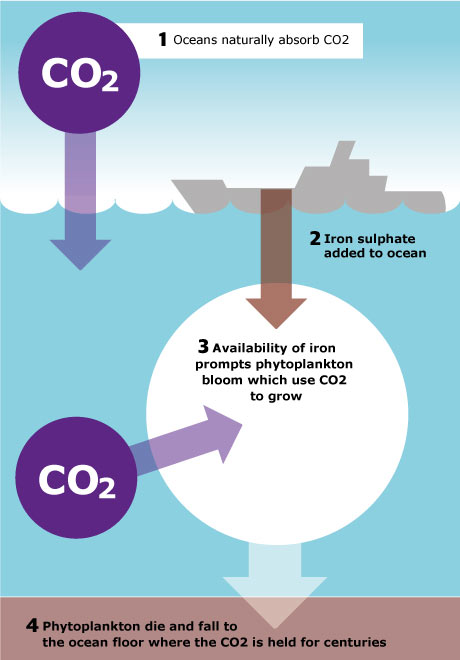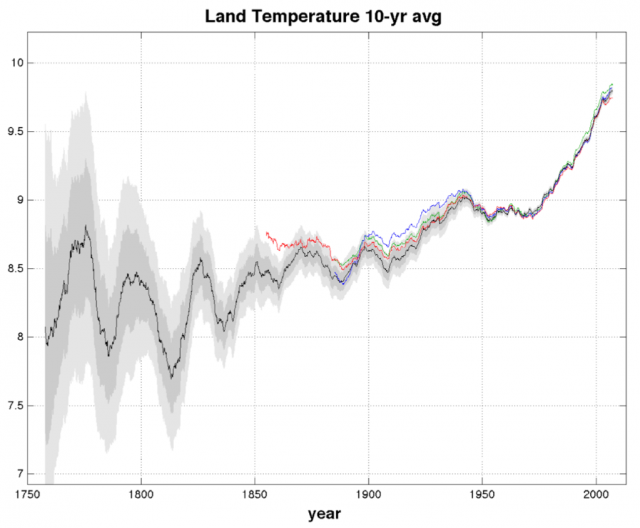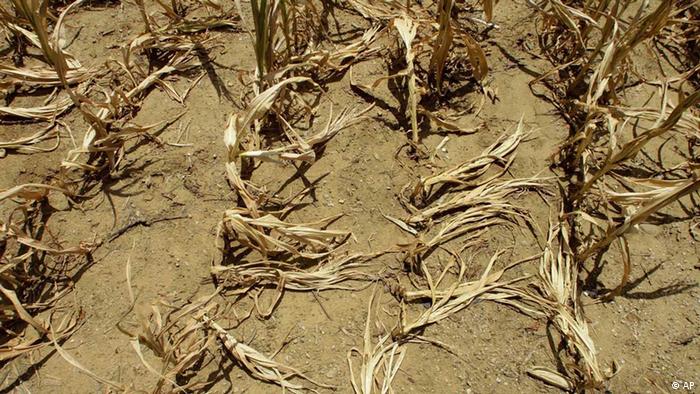Latest News
“Global Warming’s Terrifying New Math” — Bill McKibben’s call for a carbon divestment move
by Tom Athanasiou – July 27, 2012
But the core problem here is that, absent real leapfrogging, the developing countries will be hard put to take any paths apart from those that have already been pioneered in the wealthy world
This article originally appeared at EcoEquity
The new issue of Rolling Stone has a major essay by Bill McKibben, called Global Warming’s Terrifying New Math. It’s a must read, for a number of reasons. The big one is that McKibben’s call for a “carbon disinvestment” movement – aimed at breaking the hammerlock that the fossil cartel has on our civilization – is a big step forward. It’s not the only step we need to take (more on this below) but it would make a huge difference.
First up, Terrifying New Math is a fine science-for-civilians essay on the recent “extreme weather,” which has been monumental. In fact, the summer of 2012 may well turn out to be a decisive turning point in the climate war. Not to put too fine a point on this, but the deniers have obviously peaked, at least in the US, at least for now. Not that they’ve given up – or run out of funding – but at least they’re now in the rear view. I for one doubt that they’ll be taking control of the debate again.
Anyway, there’s a lot of extreme-weather color in this essay. Who knew that this spring, when it rained in Mecca at a temperature of 109 degrees, it was the hottest recorded downpour on the books? And McKibben does a great job of quickly moving on to key numbers, and then drawing some substantive conclusions.
The numbers are key to the story. McKibben chose three:
The First Number: 2° Celsius
2°C of warming, maximum. This is the semi-official inter-governmental global temperature target (“the bottomist of bottom lines”). And it’s extremely, dangerously high. McKibben makes the case here well and briefly, and correctly notes that the ubiquity of support for the 2°C target is a sign of our desperation. 2°C of warming would very likely be a catastrophe. And the way things are going, we’re not going to come anywhere close to holding the 2°C line.
“The new data provide further evidence that the door to a two-degree trajectory is about to close,” said Fatih Birol, the IEA’s chief economist. In fact, he continued, “When I look at this data, the trend is perfectly in line with a temperature increase of about six degrees.” That’s almost 11 degrees Fahrenheit, which would create a planet straight out of science fiction.
The Second Number: 565 Gigatons
The real action begins, though, with McKibben’s introduction of the global carbon budget. And I’d bet that this is the first time it’s shown its face in Rolling Stone. The discussion, again, is miraculously short, and the point is clear.
Scientists estimate that humans can pour roughly 565 more gigatons of carbon dioxide into the atmosphere by midcentury and still have some reasonable hope of staying below two degrees. (“Reasonable,” in this case, means four chances in five, or somewhat worse odds than playing Russian roulette with a six-shooter.) . . .
The 565-gigaton figure was derived from one of the most sophisticated computer-simulation models that have been built by climate scientists around the world over the past few decades. And the number is being further confirmed by the latest climate-simulation models currently being finalized in advance of the next report by the Intergovernmental Panel on Climate Change. “Looking at them as they come in, they hardly differ at all,” says Tom Wigley, an Australian climatologist at the National Center for Atmospheric Research. “There’s maybe 40 models in the data set now, compared with 20 before. But so far the numbers are pretty much the same. We’re just fine-tuning things. I don’t think much has changed over the last decade.”
In other words, we’re running out of “atmospheric space.” And, yes, we’re sure.
The Third Number: 2,795 Gigatons
This larger number is the point of the story. To see this, note that it’s five times as large as the 565-gigaton carbon budget we met just above.
This number is the scariest of all – one that, for the first time, meshes the political and scientific dimensions of our dilemma. It was highlighted last summer by the Carbon Tracker Initiative. . . The number describes the amount of carbon already contained in the proven coal and oil and gas reserves of the fossil-fuel companies, and the countries (think Venezuela or Kuwait) that act like fossil-fuel companies. In short, it’s the fossil fuel we’re currently planning to burn. And the key point is that this new number – 2,795 – is higher than 565. Five times higher. . .
Yes, this coal and gas and oil is still technically in the soil. But it’s already economically above ground – it’s figured into share prices, companies are borrowing money against it, nations are basing their budgets on the presumed returns from their patrimony. It explains why the big fossil-fuel companies have fought so hard to prevent the regulation of carbon dioxide – those reserves are their primary asset, the holding that gives their companies their value. It’s why they’ve worked so hard these past years to figure out how to unlock the oil in Canada’s tar sands, or how to drill miles beneath the sea, or how to frack the Appalachians.
If you told Exxon or Lukoil that, in order to avoid wrecking the climate, they couldn’t pump out their reserves, the value of their companies would plummet. John Fullerton, a former managing director at JP Morgan who now runs the Capital Institute, calculates that at today’s market value, those 2,795 gigatons of carbon emissions are worth about $27 trillion. Which is to say, if you paid attention to the scientists and kept 80 percent of it underground, you’d be writing off $20 trillion in assets. [My emphasis] The numbers aren’t exact, of course, but the carbon bubble makes the housing bubble look small by comparison. It won’t necessarily burst – we might well burn all that carbon, in which case investors will do fine. But if we do, the planet will crater. You can have a healthy fossil-fuel balance sheet, or a relatively healthy planet – but now that we know the numbers, it looks like you can’t have both. Do the math: 2,795 is five times 565. That’s how the story ends.
If you haven’t read the whole of McKibben’s Terrifying New Math, read it now. Here’s the link again. When you’re ready to loop back and think more about the carbon bubble in particular, see From “peak oil” to “unburnable carbon”, which I wrote last year when Carbon Tracker’s Carbon Bubble report was released. And by the way, it too is mercifully short.
***
The politics are a longer story. McKibben, a consummate literary journalist turned consummate organizer, is working hard, here, to focus attention on what I call the fossil cartel. This makes terrific sense, for all sorts of reasons. Back up far enough, though, and they come to this – while the extremely rapid reduction of global emissions is technologically and economically possible, the decisive action that we need would not be free (think about that $20 trillion in “stranded assets”). There would be powerful losers.
These losers can usefully be seen as a “carbon cartel” that consists of the fossil-energy companies, the fossil-energy exporting nations, and their innumerable satellites, agents, and camp followers. And that cartel is exactly where McKibben, and our friends at 350.org, and the folks at Oil Change International, and lots of others, are setting their sights. It’s an excellent focus. Hell, from the point of view of place-based and national activism, it’s probably the best we could hope for. It opens doors to real and useful insights. Like this one:
If Exxon burns its current reserves, it would use up more than seven percent of the available atmospheric space between us and the risk of two degrees. BP is just behind, followed by the Russian firm Gazprom, then Chevron, ConocoPhillips and Shell, each of which would fill between three and four percent. Taken together, just these six firms, of the 200 listed in the Carbon Tracker report, would use up more than a quarter of the remaining two-degree budget. Severstal, the Russian mining giant, leads the list of coal companies, followed by firms like BHP Billiton and Peabody. The numbers are simply staggering – this industry, and this industry alone, holds the power to change the physics and chemistry of our planet, and they’re planning to use it.
So far so good. Clear as a bell. But what are the implications? Here we need a bit more thought, which can usefully begin by focusing on that $20 trillion in assets – which we fully intend to “strand,” and as quickly as possible.
McKibben’s essay paves the way, by framing the goal as “divestment.” This is a major step forward from the argument made in the Carbon Bubble report itself, which basically presents itself as a call for rational and prudential management of the investment economy, rather than, say, human civilization.
Now is the time to move into the second generation of investor action on climate change, which tackles the system that is locked into financing fossil fuels. Climate change poses a great threat to the global economy and it is not unrealistic to expect regulators responsible for assessing new systemic risks to address the carbon bubble.
The goal now is for regulators to send clear signals to the market that cause a shift away from the huge carbon stockpiles which pose a systemic risk to investors. This is the duty of the regulator – to rise to this challenge and prevent the bubble bursting.
In any case, the alternative to rational management, or divestment, or whatever you want to call it, is just more delay and fossil lock-in. It’s a future in which the cartel remains firmly in control of energy system investment and deployment. One in which after, say, another decade, when the danger can no longer be denied, “the markets” suddenly “decide” (as they say) that most known “economic reserves” of fossil fuels simply will not be burned. That they are obsolete. Which would presumably mean a sudden and catastrophic “repricing” of coal and oil stocks. And, as Paul Gilding put it in his 2011 book The Great Disruption, “if you lose your shirt on your coal and oil investments, don’t say you weren’t warned.”
McKibben is as prudential as they come. But he’s not pretending that divestment is a matter of rational investing. Rather, his goal is a movement that’s powerful enough to isolate and then sunset the fossil cartel, or at least force them to “become true energy companies, this time for real.” Nor does he pretend that this would be easy. And while he puts a certain faith in capitalism’s famous capacity for “creative destruction,” he’s not waiting for the cartel to fall. He’s pushing.
Of course the cartel is very, very strong. All else being equal, it’s going to take us all down with it. This means we have to fight, and it also means that we could win. Though if you compare the carbon divestment challenge to the one faced by the divestment campaign that helped bring down South Africa’s Apartheid. . .
The fossil-fuel industry is obviously a tougher opponent, and even if you could force the hand of particular companies, you’d still have to figure out a strategy for dealing with all the sovereign nations that, in effect, act as fossil-fuel companies. The link for college students is even more obvious in this case. If their college’s endowment portfolio has fossil-fuel stock, then their educations are being subsidized by investments that guarantee they won’t have much of a planet on which to make use of their degree. (The same logic applies to the world’s largest investors, pension funds, which are also theoretically interested in the future – that’s when their members will “enjoy their retirement.”) “Given the severity of the climate crisis, a comparable demand that our institutions dump stock from companies that are destroying the planet would not only be appropriate but effective,” says Bob Massie, a former anti-apartheid activist who helped found the Investor Network on Climate Risk. “The message is simple: We have had enough. We must sever the ties with those who profit from climate change – now.”
***
There’s just one wee problem, which becomes visible only when you imagine success, which is to say, when you imagine an accelerated fossil phase-out that is driven, in part, by increased fossil-fuel prices. Here, McKibben chooses to be upbeat:
If you put a price on carbon, through a direct tax or other methods, it would enlist markets in the fight against global warming. Once Exxon has to pay for the damage its carbon is doing to the atmosphere, the price of its products would rise. Consumers would get a strong signal to use less fossil fuel – every time they stopped at the pump, they’d be reminded that you don’t need a semi-military vehicle to go to the grocery store. The economic playing field would now be a level one for nonpolluting energy sources. And you could do it all without bankrupting citizens – a so-called “fee-and-dividend” scheme would put a hefty tax on coal and gas and oil, then simply divide up the proceeds, sending everyone in the country a check each month for their share of the added costs of carbon. By switching to cleaner energy sources, most people would actually come out ahead.
The problem is the “most people would actually come out ahead,” part, wherein McKibben signals the importance of fee and dividend, which seems to be the current name of cap and dividend, a proposal I very much support. Still, what McKibben should really say is that “most people in rich countries would actually come out ahead.” Because if fee and dividend was the only equity framework on offer, and if energy prices increased as a result of the sunsetting of the fossil industry – which would be a very real danger, given this crazy world and its crazy economy – this wouldn’t be very good news for most people in the developing world. Not, at least, during the next few critical decades, wherein we hope to see a great transition. Which would probably fail for just this reason.
Please don’t misunderstand me. I love most all of the argument here, and I hesitate to write these words. The situation in the US is now so serious, so certifiably insane, that we Americans can be forgiven a bit of strategic self-involvement. We have to do whatever it takes to turn the American supertanker, and if that means temporarily putting the really big problem of – oh, let’s call it international solidarity – aside, so be it. The movement is an ecosystem, and we don’t all have to do the same thing. But do note that we never quite get around to the “acting globally” part of the equation. And that, despite all, despite even mad dogs and Republicans, climate remains a global commons problem. And that the “cooperative management” that’s needed to solve such a problem, as Elinor Ostrom explained in her 2009 Nobel lecture (delivered to commemorate her receipt of the economics prize) is only possible in the presence of “institutions that bring out the best in humans” by supporting “free communication,” “trust,” and “equitable outcomes.” And this means taking a very serious whack at not just the problem of domestic transitional justice (what fee-and-dividend is all about) but global transitional justice as well.
It’s too easy to say, as McKibben does, that …
Copenhagen failed spectacularly. Neither China nor the United States, which between them are responsible for 40 percent of global carbon emissions, was prepared to offer dramatic concessions, and so the conference drifted aimlessly for two weeks until world leaders jetted in for the final day.
But it’s not at all clear what concessions the Chinese could have offered, given the small potatoes that the rich-world negotiators had put on the table. In fact, China’s tactics in Copenhagen, clumsy and unimaginative though they may have been, made a terrible and even tragic kind of sense. And it was hardly the Chinese alone that resisted the deal. The whole developing-country block was torn between the desire for great ambition and the fear that, all else being equal, greater ambition would close off their development pathways.
And it still is. Torn, I mean. Which is why the climate negotiators, and the Rio negotiators for that matter, are lucky if they can even crawl forward. And why the key to a breakthrough is, in the latest jargon, Equitable Access to Sustainable Development. This is a long story, but it begins with a simple truth. Which brings me to …
The Fourth Number: ‘X’
The climate problem, in a nutshell, is that we’ve already exhausted the global carbon budget – the atmospheric space – but that many of us are still far too poor to live minimally dignified, let alone prosperous lives. Given this, and given that global emissions must peak as soon as humanly possible, how shall we understand the predicament of the developing world? Will emerging powers like China and Brazil – where most all people are still far poorer than the average American, or European, or Japanese – have to force themselves to an emissions peak at the same time as these wealthier countries? Clearly, that’s not on the table. But how wealthy would a country have to be — take “X”‘ as its per-capita income, in international dollars — before it could reasonably be expected to peak its emissions? And with what guarantees of international support would it do so? And what about the truly poor nations, India and most of Africa for starters? And those nations that are particularly vulnerable to the coming “impacts,” as they are called? What considerations can they reasonably expect? Keep in mind that, at a certain point, it hardly matters if these are judged in terms of “climate justice” or “climate realism.” What finally matters is that the transition be fair enough to actually work.
The core problem here is that, absent real leapfrogging, the developing countries will be hard put to take any paths apart from those that have already been pioneered in the wealthy world. The awful truth is that the only proven routes to the promised land of “development” – to water and food security, improved health care and education, and in general dignified ways of life that offer substantive choices and freedoms – involve expanding access to energy services, and thus corresponding increases in fossil fuel use and thus carbon emissions. Given this, what to do? This is the South’s dilemma, and if all we have to say about it is that fossil price increases will have virtuous effects (which of course they will), then we are going to lose.
The bottom line: Only a grand and global coalition – one that includes activists, scientists, politicians, negotiators, various elites and lots of citizens, one that brings nations in both the North and the South together to redesign and rebuild the global energy system, and fast – can possibly be powerful enough to defeat the fossil cartel. Without such a grand coalition, we can fight, but we probably can’t win.
We’re kind of trapped here. There’s no choice but to move forward as we can. But, still, there has to be something more for the world’s poor, and for its strivers. If ever it seemed that the world’s elites were getting serious about the “sustainable development goals” that Rio+20 put on the agenda, then climate deadlock would begin to crumble and, not at all incidentally, the fossil cartel would find itself under real pressure. But leapfrogging costs money, and takes technology, and right now neither money nor technology is on the table. From the South’s perspective, this quite implacably means that development is still pitted hard again climate protection, and it will continue to mean this until low-carbon energy is no longer an expensive gamble that the poor are expected to make on their own.
A carbon disinvestment campaign is a great idea. But to line up the ducks that we’ll need to win that campaign, we also need a plan for “lifting up the poor,” globally and as an integral part of the abandonment of fossil energy. Fee-and-dividend approaches could indeed help within rich countries. But they won’t work internationally, and we need something that will. Because, as the protest signs outside the recent Bonn talks said, “Equity is the gateway to ambition.”





 Reply With Quote
Reply With Quote

 A magnified view of the plankton three weeks after its fertilisation with iron. Photograph: Philipp Assmy/Awi/EPA
A magnified view of the plankton three weeks after its fertilisation with iron. Photograph: Philipp Assmy/Awi/EPA Iron filings and carbon burial Illustration: guardian.co.uk
Iron filings and carbon burial Illustration: guardian.co.uk





 Canale, Peres, et al./PloS OnePatches of the Atlantic Forest surveyed by researchers.
Canale, Peres, et al./PloS OnePatches of the Atlantic Forest surveyed by researchers.
 Bloomberg NewsResearchers found that the jaguar had virtually been wiped out from the forest patches they studied.
Bloomberg NewsResearchers found that the jaguar had virtually been wiped out from the forest patches they studied. Irrigating crops with groundwater has improved production on Indian farms, but the region's water tables are declining
Irrigating crops with groundwater has improved production on Indian farms, but the region's water tables are declining Groundwater is being tapped in areas with low rainfall
Groundwater is being tapped in areas with low rainfall Farmers in the US are redirecting surface water into the aquifers to prevent catastrophic shortages
Farmers in the US are redirecting surface water into the aquifers to prevent catastrophic shortages New legislation in Spain protects the groundwater from exploitation
New legislation in Spain protects the groundwater from exploitation

Bookmarks